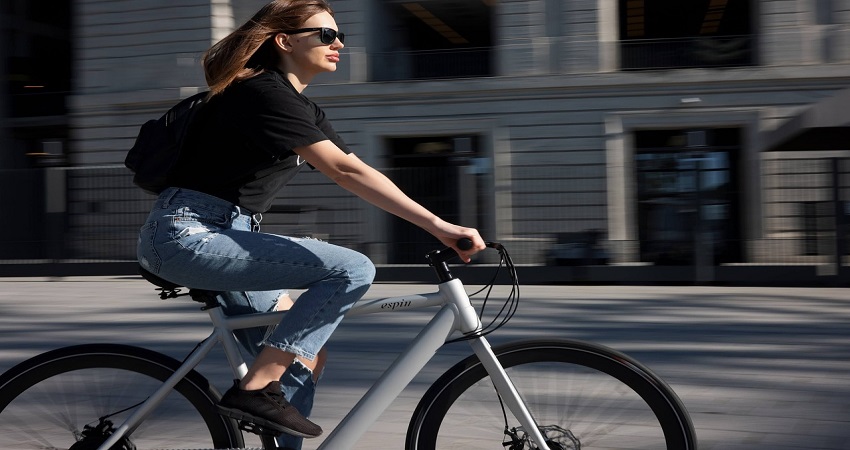No, you cannot park in a bicycle lane. Violating this rule can result in a fine or the towing of your vehicle.
Bicycle lanes are designated for the safety and convenience of cyclists, and parking in them can pose a hazard, obstructing the flow of bicycle traffic and causing potential accidents. It is important to respect and follow the rules of the road to ensure the safety of all road users, including cyclists.
Why Park In A Bicycle Lane?
While it is generally considered illegal and unethical to park in a bicycle lane, there are situations where it may be tempting or even necessary to do so. In this article, we explore some of the reasons why people might be compelled to park in a bicycle lane. Although it is important to prioritize the safety and convenience of cyclists, understanding these motivations can shed light on the complex dynamics between drivers and cyclists on the road.
Convenience
Parking in a bicycle lane might seem like a convenient option when you are in a hurry or cannot find an available parking spot nearby. Having a vehicle within close reach can be especially convenient if you need to load or unload heavy groceries, equipment, or other belongings. However, it is crucial to remember that bicycle lanes are designated for the safety and convenience of cyclists, who rely on these lanes to navigate through traffic.
Avoiding Traffic
One of the main reasons drivers may be tempted to park in a bicycle lane is to avoid traffic congestion. In busy urban areas, finding a suitable parking spot can be a challenge, and drivers might resort to utilizing a bicycle lane to quickly find parking and bypass a long line of cars. While it may seem like a shortcut to save time, it is important to prioritize the safety and well-being of cyclists who depend on these lanes for a smooth and uninterrupted flow of traffic.
Closer To Destination
When time is of the essence or you are struggling with mobility issues, parking in a bicycle lane might be seen as a way to get closer to your destination. Being able to park directly in front of a specific building or venue can be a major convenience, especially for individuals with disabilities or limited mobility. However, it is essential to remember that parking in a bicycle lane can hinder the accessibility and safety of cyclists, who rely on these lanes to travel efficiently and without impediments.
In conclusion, while parking in a bicycle lane may seem tempting in certain circumstances, it is important to prioritize the safety and convenience of cyclists. By understanding the motivations behind this behavior, we can foster better road-sharing etiquette and work towards finding more suitable parking options that accommodate the needs of all road users.
Understanding Bicycle Lanes
Bicycle lanes play an essential role in providing safe and designated spaces for cyclists to ride in urban areas. As a driver or even a cyclist, it is crucial to understand the purpose and regulations surrounding bicycle lanes. In this article, we will delve into the definition of bicycle lanes, their purpose, and the different types that exist.
Definition
Bicycle lanes are designated portions of a roadway specifically intended for bicycles. These lanes are typically marked with painted lines and symbols, creating a visually distinctive space for cyclists to travel. They are often situated adjacent to vehicle lanes and are typically separated by a solid white line.
Purpose
The purpose of bicycle lanes is to enhance safety by providing a dedicated space for cyclists. Bicycle lanes serve as a buffer zone between motorized vehicles and bicycles, reducing the risk of accidents and collisions. They encourage cycling as a viable means of transportation and promote a more sustainable and healthy lifestyle. Additionally, bicycle lanes contribute to traffic flow efficiency by separating bicycle traffic from vehicle traffic.
Types Of Bicycle Lanes
There are various types of bicycle lanes tailored to different traffic conditions and infrastructure designs. Let’s explore some of the most common types:
- Conventional Bicycle Lanes: These are the standard bicycle lanes found in most cities, marked with painted lines and symbols, and separated from vehicle lanes by a solid white line.
- Buffered Bicycle Lanes: Buffered bicycle lanes provide additional separation between cyclists and vehicles by incorporating a striped buffer zone.
- Protected Bicycle Lanes: Also known as cycle tracks, protected bicycle lanes feature physical barriers like curbs, bollards, or parked cars to provide a higher level of protection and separation from motorized traffic.
- Shared-Use Paths: These off-street paths are designed for both pedestrians and cyclists to share. They offer a more leisurely and relaxed riding experience away from vehicular traffic.
Understanding these different types of bicycle lanes and their distinct characteristics can help road users better comprehend how they should interact with cyclists and contribute to creating a safer environment for everyone.
Legalities Of Parking In Bicycle Lanes
Parking in bicycle lanes is a topic that raises questions in many cities across the world. As cities strive to promote cycling as a sustainable mode of transportation, it becomes important to understand the legalities surrounding parking in bicycle lanes. This blog post explores the local regulations, fines and penalties, as well as exceptions that may apply in different jurisdictions when it comes to this issue.
Local Regulations
Each city has its own set of regulations regarding parking in bicycle lanes. It’s crucial to familiarize yourself with the specific rules in your area. However, here are some common regulations you might come across:
- Parking in a bicycle lane is typically prohibited unless stated otherwise.
- Some cities may allow short-term parking in certain circumstances, such as for loading and unloading purposes.
- In most cases, parked vehicles must not obstruct the passage of cyclists or impede their safety.
Fines And Penalties
If you choose to park in a bicycle lane where it is prohibited, you may face fines and penalties. These consequences are put in place to discourage parking in areas designated for cyclists, ensuring their safety and smooth traffic flow. While the specific fines and penalties vary depending on the jurisdiction, they can range from monetary fines to the possibility of having your vehicle towed.
Exceptions
While parking in a bicycle lane is generally not allowed, there are some exceptions that may apply in certain situations. These exceptions vary by location and local regulations. Here are a few instances where parking in a bicycle lane might be permitted:
- Temporary situations where signage or road markings indicate that parking in the bicycle lane is permitted.
- Designated areas where shared parking between bicycles and vehicles is allowed.
- Emergency situations where parking in the bicycle lane is necessary for safety reasons.
It’s essential to note that the exceptions mentioned above should always be verified according to the specific local regulations in your area.
Alternatives To Parking In Bicycle Lanes
Parking in bicycle lanes is not allowed, but there are alternatives to consider. Explore nearby parking spaces, designated areas, or bike racks to ensure the safety and convenience of both cyclists and motorists. Stay informed to avoid any violations and support a bike-friendly community.
When it comes to parking, it is crucial to prioritize the safety and convenience of all road users. While parking in bicycle lanes is not only illegal but also poses a threat to cyclists, there are several alternatives available. By exploring nearby parking lots, designated parking areas, and embracing alternative transportation, you can efficiently park your vehicle without impeding the flow of bicycle traffic.
Nearby Parking Lots
If you need to park your vehicle close to your destination, considering nearby parking lots is a practical solution. These lots not only provide designated spaces for cars but also contribute to efficient traffic management. By utilizing these parking lots, you can ensure the safety of cyclists and pedestrians.
Designated Parking Areas
Another alternative to parking in bicycle lanes is to utilize designated parking areas. Many cities and communities have designated parking spots specifically for cyclists. These areas are conveniently located near popular destinations and offer a secure place to park your vehicle. By choosing to park in these designated areas, you contribute to creating a harmonious environment for both cyclists and drivers.
Alternative Transportation
One effective way to minimize the need for parking altogether is to explore alternative transportation methods. Public transportation, such as buses and trains, allows you to easily reach your destination without the hassle of finding parking. Additionally, alternatives like walking or biking can be not just environmentally friendly but also a great way to incorporate exercise into your daily routine. By embracing alternative transportation options, you can alleviate parking-related issues and reduce congestion on the roads.
Sharing The Road
When it comes to sharing the road, one important consideration is the proper use of bicycle lanes. As more people turn to cycling for transportation and exercise, it is essential to understand the rules and etiquette surrounding bicycle lanes. Respecting cyclists, promoting safety, and advocating for better infrastructure are all critical aspects of ensuring a harmonious coexistence between cyclists and motorists.
Respecting Cyclists
Cyclists, like motorists, have the right to use the road safely and without obstruction. Respecting cyclists means acknowledging their presence on the road and understanding that bicycle lanes are designated for their use. When parking, it is crucial to avoid blocking or encroaching on these lanes. By doing so, we demonstrate respect for their space and contribute to a safer and more enjoyable cycling experience. Remember, a few extra steps to find alternative parking spaces outside the bicycle lane can go a long way in fostering positive and considerate road sharing.
Promoting Safety
Promoting safety is a paramount concern for both cyclists and motorists. In the interest of public safety, it is incumbent upon drivers to avoid parking in bicycle lanes. Parking in these designated areas not only puts cyclists at risk, but it also impedes the flow of traffic and increases the potential for accidents. By refraining from parking in bicycle lanes, we prioritize the well-being of all road users and help create a safer environment for everyone. Let’s commit to being vigilant and responsible road users, promoting safety by keeping bicycle lanes free from obstructions.
Advocating For Better Infrastructure
A critical step toward encouraging the proper use of bicycle lanes is advocating for better infrastructure. Support for the development and maintenance of well-designed bicycle lanes can go a long way in facilitating the safe and efficient movement of both cyclists and motorists. When bicycle lanes are clearly marked and easily accessible, it becomes easier for motorists to identify and respect these dedicated spaces.
Additionally, advocating for better infrastructure includes ensuring that bicycle lanes are adequately protected and clearly separated from motorized traffic, further enhancing the safety of cyclists. By advocating for better infrastructure, we not only contribute to the overall well-being of cyclists but also promote a more sustainable and environmentally-friendly mode of transportation.
Frequently Asked Questions On Can You Park In A Bicycle Lane?
Can You Park In A Bicycle Lane?
Parking in a bicycle lane is illegal in most places. Bicycle lanes are designated for cyclists to ensure their safety. Parking in a bicycle lane can obstruct the path of cyclists and create a dangerous situation. It is important to respect and follow the rules of the road to ensure the safety of all road users.
Conclusion
Parking in a bicycle lane is generally not permitted, as it poses a safety risk to cyclists and hinders their ability to safely navigate the road. It is important for drivers to be aware of and respect the designated bicycle lanes to ensure the safety and convenience of all road users.
Violating this rule can result in penalties or fines, so it’s crucial to understand and follow the rules of the road. Stay informed and prioritize road safety for a harmonious coexistence between motorists and cyclists.



